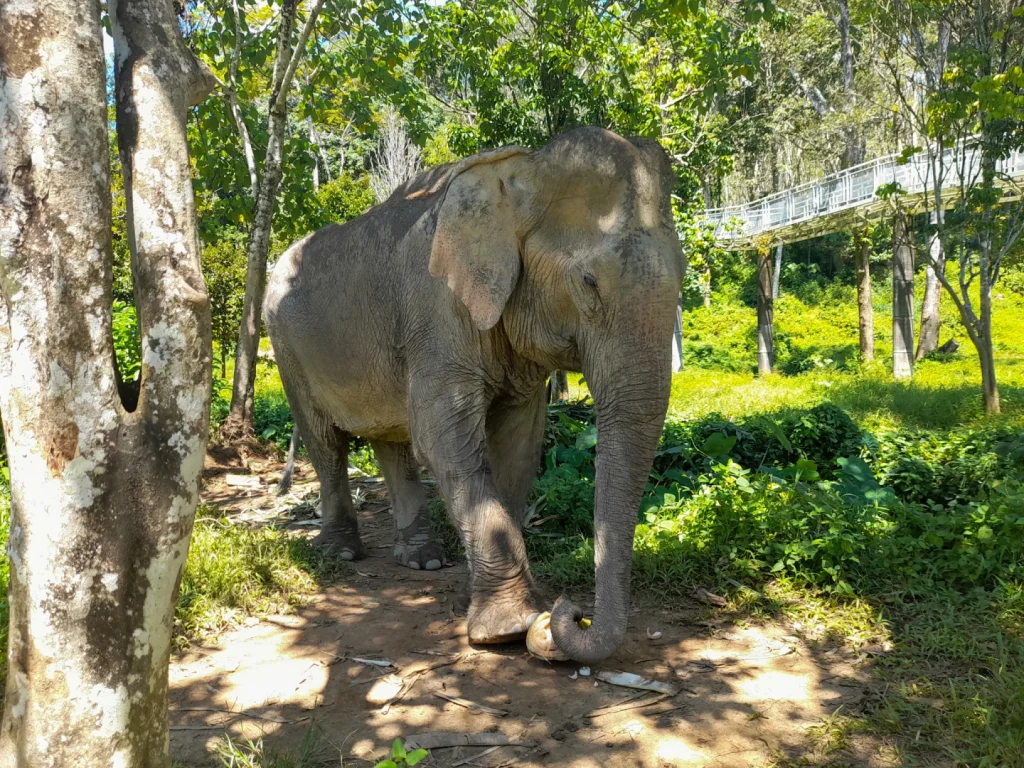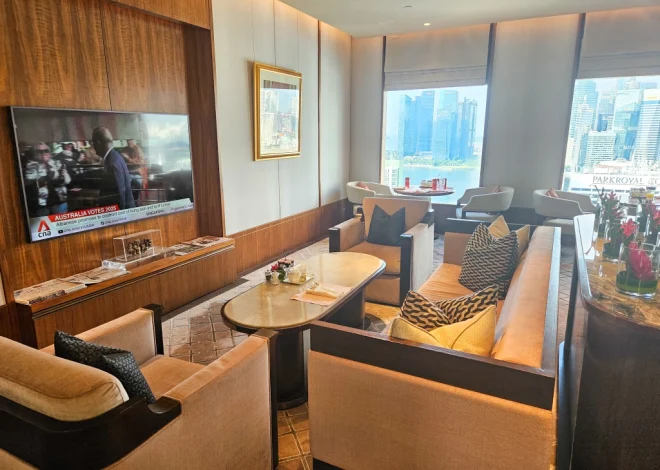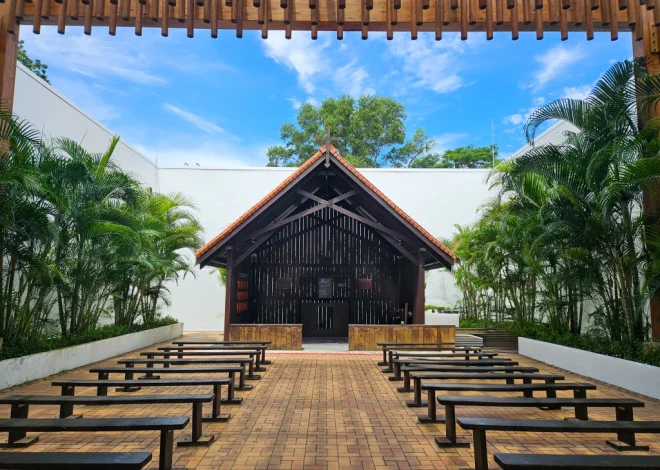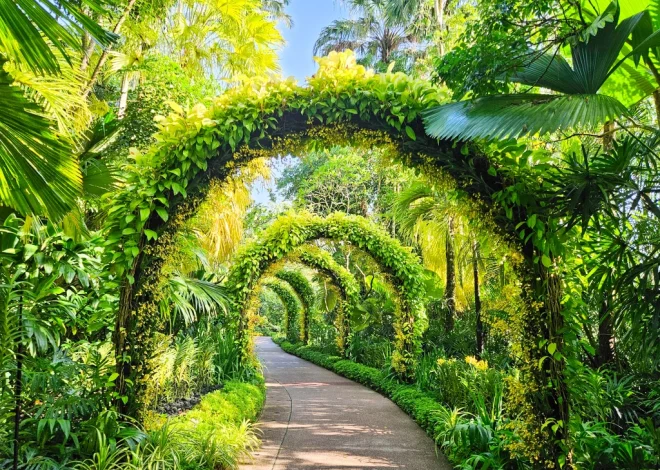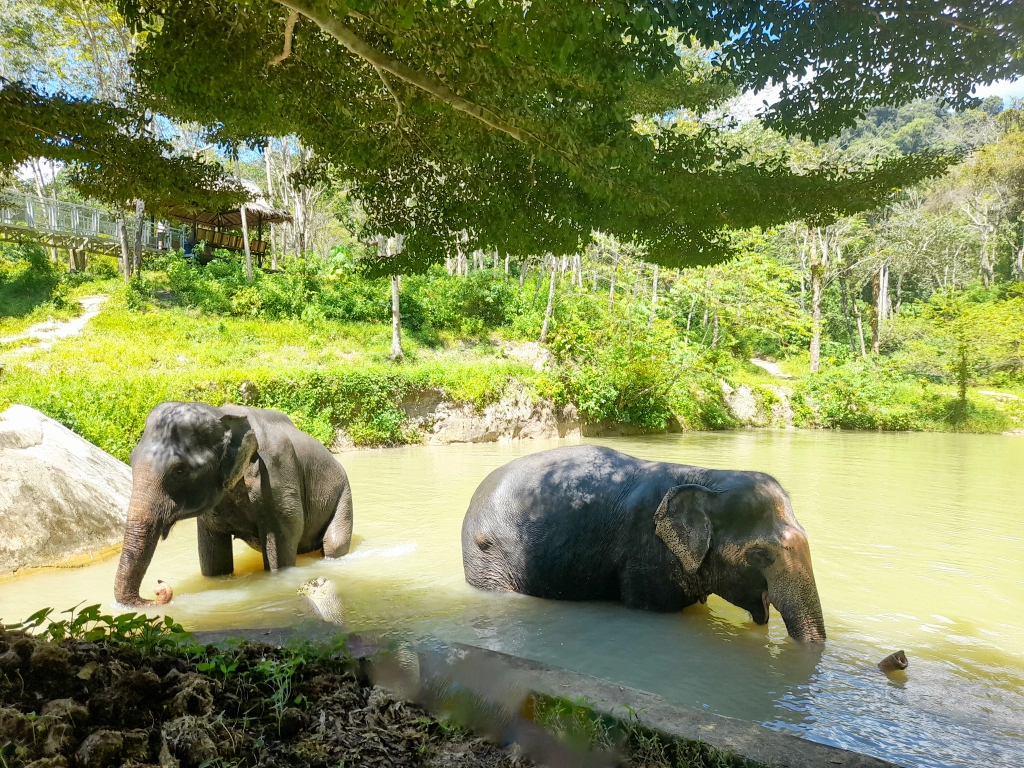
A Morning with the Elephants at Phuket Elephant Sanctuary
When visiting Thailand I knew I wanted to see the elephants. They are a national symbol, included on the Thai flag until 1917 and a rich part of the country’s culture and history.
However, seeing the elephants in the best way was a dilemma for me. I felt strongly that I didn’t want to be funding an industry that hurts elephants and wanted to contribute in a more positive and meaningful way. I was shocked by the amount of elephants I saw across Phuket in tiny pens being forced to provide rides to paying tourists, or held in rope or chains at the roadside to be fed one banana for a fee to passers by. I didn’t want to be funding that. So instead, enter Phuket Elephant Sanctuary.
About Phuket Elephant Sanctuary
Phuket is home to lots of elephant ‘sanctuaries’ but Phuket Elephant Sanctuary in Pa Klok is the original and offers the most space to the elephants. Founded in 2016, the 30 acre site was founded as a more ethical elephant tourism offering. It houses elderly and disabled elephants, after long lives in the tourism or logging industries.
Views of the site (humans watch from the walkway per photo on the right)
Many people don’t realise how abusive the tourism industry is to elephants. Elephants in the circus are tortured in to obedience – often starved to keep their size down, forced to perform via pain and blinded by the circus light and sand – it’s truly exploitative for them. Those offering rides to humans also often suffer broken or misshapen backs, as well as broken toes from the weight they are carrying. I was shocked to learn that the elephants who can ‘paint’ are actually pierced with sharp nails in the ears by their handlers to force them to continue painting (hidden from the observer who thinks the handler is just encouraging/supporting the animal and rubbing the ears).
Elephants in the logging industry fare even worse, being chained and forced to carry extremely heavy loads. Most of these elephants have completely scarred or damaged legs, often have irreparable damage to their feet and toes, and significant scarring all over their bodies from whips.
Phuket Elephant Sanctuary takes elephants after decades in these industries and gives them a nice new home. Due to the abuse, these elephants can never be put back in to the wild as they just wouldn’t be able to survive – they’ve literally had their animal instincts knocked out of them. Instead the elephant sanctuary lets them roam, provides plenty of food and water, offers daily medical check ups and monitors elephant health to support recovery/improvement of many injuries.
In short it’s like a nice retirement home for abused elephants. This felt much more of a happy choice for me to visit. That said, it is still a tourist attraction, the owner is still monetising elephants who live in captivity. But visiting funds this life for the elephants, which is much, much better than the alternatives.
A Morning with the Elephants
After debating long and hard, I booked the Morning with the Elephants experience. Phuket Elephant Sanctuary offer hotel pick up and a fancy van turned up to pick us up at 9am. We were transported to the main building to check in. From there, we had to board a vehicle with other guests to take us in to the sanctuary.
On arrival, we were provided with snacks and drinks, plus an introductory video on the history of the site, elephant abuse and the elephants themselves. We were then split in to groups of around 8 (there were 5 groups), and each went off in a different direction.
My Group was a family of 6 and my husband and I. We headed first to feed the elephants. We had to wash our hands to remove the toxins sun-cream, insect repellant etc give us. Elephants are herbivores so you’re given a couple of baskets of fruit each and off you go to feed the elephant. I got to feed the elephant Kannika, who was actually the first elephant at the site in 2016. She was flapping her ears and stealing the fruit, full of cheekiness and I liked her a lot.
After feeding, it was time to hit the walkway, which is an elevated platform above the sanctuary floor where the elephants roam – enabling you to observe them but not get close to them or touch them. Each elephant has a human with it each day, monitoring it’s poop, ensuring it has food, encouraging it to bathe, weighing it, and doing medical checks. The bond between elephant and its human is special, and the human is always close by but never too close. It was nice watching the elephants look for their human and sometimes chatting with them via noises, walking along with flapping ears.
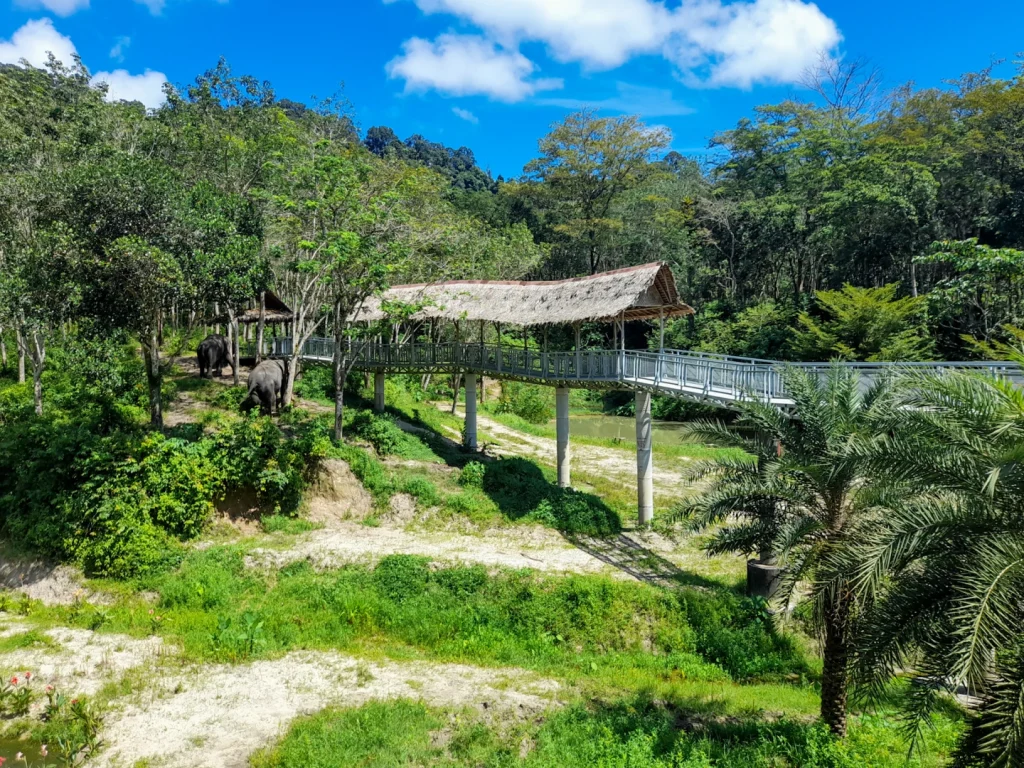
We also saw 2 elephants bathing. They wandered in by themselves, splashed about and walked out again, with their humans only pausing to check they had no sand in their eyes (as both are partially blind) and then moving out of the way again.
Finally, after 2.5hrs walking around, we were provided with a tasty lunch and then transferred back to our hotel.
A few more interesting facts
- Elephants live to be around 80-90 years old. Most elephants at Phuket Elephant Sanctuary are at least 40.
- When an elephant dies here, it is buried with proper burial rituals including monks attending to provide prayers.
- Elephants only sleep about 3 hours per night, and they sleep standing up as they are too inflexible to get down. There are huge mounds of earth around the sanctuary to help the old elephants relax, acting as a bit of a ‘pillow’ to bear (bare? who knows) some of their weight.
- Elephant babies weigh about 100kg when they are born. The sanctuary doesn’t have any babies as it caters for elderly elephants but it hopes one day it may also be able to rescue younger elephants, though they require a different level of care and expertise.
- Elephants can understand and communicate as they are very intelligent. A couple of elephants at the sanctuary come from near the Malaysian border and don’t understand Thai so google translate is used! They communicate with each other, and their humans, via vibrations from the trunk.
- Elephants are naturally sociable. Most have a friendship group and like to sleep close together. Only one elephant at the sanctuary has no friends and has to have a separate bathing area etc. They think she was so badly abused, and likely bullied by other elephants, and won’t trust any human or elephant. She ‘tolerates’ her human at the sanctuary, whereas the other elephants play and have fun with theirs.
